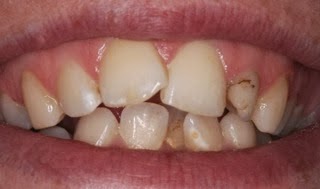As a provider of dental care, we want to ensure that we and our patients
are not exposed to the risk of infection. We find that the most effective way of
achieving this is implementing a robust
policy for cross infection control. We
have many governing bodies who help us to achieve best practice, including the
Department of Health and the Health and Safety executive.
Some of our cross infection control is obvious when you seen the team in
uniform, wearing gloves and surfaces being cleaned but there is a tremendous
amount that goes on behind the
scenes.....................................................
How does it all
work?
Effective management of your protection comes into play a long time before
patients cross the threshold at Absolute.
It all starts with staff! we need to help prevent cross infection from
ourselves to others and this includes immunisation for all sorts of conditions
like rubella, hepatitis, pertussis, and the more common ones like flu. These
early interventions are carried out at or even before our induction training,
which is undertaken by all members of the team and is updated at our regular
practice meetings. We hold these frequently at Absolute so that we can all
update on current best practice.
What else do we do to protect our staff?
Good thorough hand hygiene, personal protective equipment such as gloves,
face masks and glasses. Uniforms as well form part of our cross infection
control.
We make every effort to reduce the risk of cross infection, which is why it
is so important that patients inform us of their general health as there may be
some factors which may affect not only dental health but affect some of the
treatments we provide. The questions we ask change frequently as new evidence
based information and research comes to light.
What happens around the rest of the practice?
We can separate different areas into zones around the practice depending
on which activity takes place, as there are different regulations which apply.
e.g. In any kitchen area there are designated cleaning products including colour
coded buckets and mops to ensure the correct one is used for each area.
Treatment rooms.
In the treatment rooms we carry out numerous tasks including flushing
through the water lines with decontaminants. This is done on a daily basis and
we carry out stringent dip slide tests to test the effectiveness of the system.
The surfaces of the treatment rooms are cleaned before and after each patient
and we use as many disposable products as possible to limit the chance of
infection. You may have noticed that the instruments we use come in packs. This
is done at the end of the sterilisation cycle and packs are rotated after date
stamping. All of the instruments we use in the treatment rooms are transported
to the decontamination area in lidded boxes, reducing risk even further.
What happens in the decontamination room?
There is a clear and robust process which takes place in this room and
these processes have an audit trail, which helps us to identify that equipment
used in the process is effective and that every stage of the process is carried
out and audited. This includes, in the first instance, use of a
washer/disinfector. This washes the instruments at high temperature to remove
surface debris and is audited by two different processes. Next, instruments are
examined under a magnified light to check for debris and where necessary put
through the washer/disinfector for a second time. Protein soil tests help us to
identify the levels of contamination and are also audited regularly.
Instruments then are processed through the steriliser which has checks each cycle to ensure the correct sterilisation parameters are being met. Once sterilised the
instruments are then bagged, date stamped and stored. Incidentally, these bagged
instruments are checked and re-sterilised before they reach their expiry
date.
The equipment in this room is of the highest quality, regularly serviced and maintained, an all housed behind a glass wall so that you can see the process at any stage, first hand, to give you reassurance.
This is a brief overview of some of what goes on in our world of cross
infection control, some of it more obvious to the eye than others, and all done
to help protect you at Absolute!
Maureen





